Team Europe is an important partner for Kenya’s development cooperation in the commitment to achieve the country’s national priorities and the drive towards the realisation of Sustainable Development Goals1. The Team Europe-Kenya partnership is rooted in a joint commitment for prosperity with the aim of improving the quality of life for all. It also contributes to addressing the main challenges identified in Kenya’s national development Vision 20302. One focus of the joint efforts of this partnership is the promotion of conservation.
The EU has a longstanding relationship with Kenya and together they have worked hand in hand to face regional, national and global issues ranging from climate change and COVID-19 to fostering peace and security. Through programmes and funding instruments such as the European Development Fund (EDF) and the EU Emergency Trust Fund for Africa, as well as Partnership Agreements (e.g. Economic Partnership with the East African Community), difficulties that Kenya faces have been mitigated or addressed.
The provision of sustainable solutions to challenges linked with wildlife and livelihoods have been at the heart of EU programming. H.E. Simon Mordue, former Ambassador of the EU Delegation to Kenya, explains “a strong focus of the EU funding is on wildlife, as some of the conservations relying heavily on income from tourism have been struggling to pay their rangers and keep wildlife adequately protected.” Hence, a partnership between the EU and the Northern Rangelands Trust (NRT) has been established to make sure that EU funds and ongoing EU programmes can first support the salaries of rangers; second, provide equipment for different purposes including detecting smugglers; and third, contribute to keeping wildlife safe while at the same time protecting livelihoods which depend on the peaceful coexistence of humans and wildlife.
Community-led conservancies in northern Kenya: a success story
How can we reconcile human beings and nature? How can we enable local indigenous communities in Kenya to conserve natural resources in a sustainable manner while at the same time protecting wildlife? Answers to these questions can be found by examining cases of successful organisation models and their approach towards empowering local communities and preserving wildlife and biodiversity.
NRT, an EU partner in northern and coastal Kenya, is an example of an organisation that has generated tangible results and had a real impact on indigenous communities. NRT is an umbrella organisation which currently supports 39 community conservancies across 10 counties of Kenya, covering 4.5 million acres. This translates to 7% of the country’s landmass. NRT enables the communities to conserve their natural resources and use them sustainably, integrate livestock keeping and wildlife conservation while securing peace, security and good governance3.
According to Tom Lalampaa, Chief Executive Officer of Northern Rangeland Trust Kenya, “NRT provides a platform from where the government, the private sector and the local communities engage to act jointly on action that aims at supporting conservation, community development, livelihood improvements, peace and enterprises.”
Lessons learnt from the NRT model in Kenya:
- The conservancy model delivers results because it is community-driven, community-owned and community-led.
- Organising the communities and ensuring good governance is a key factor in the success of the model.
- Bridging the gap between conservation and improved indigenous livelihoods is vital
1. A community-driven, community-owned and community-led conservancy model
A community conservancy is a community-based organisation created to support the management of community-owned land for the benefit of livelihoods. They are legally registered entities, governed by a representative Board of Directors and run by a locally-staffed management team.
Conservancies work to improve governance and representation for their members by building on traditional, indigenous cultural structures, and empowering women and youth in particular to become agents of change. Good governance enables livelihoods and development projects to be owned, driven and maintained by indigenous people, as well as providing a solid point of contact for donors or investors.
Conservancies give indigenous communities a framework and the right incentives to protect the diverse wildlife they share the landscape with, manage rangelands and fisheries more sustainably, and improve regional peace and security. They also provide a vehicle for business development, helping to diversify and boost economies in some of Kenya's most marginalised areas.
2. Organise the communities and ensure good governance
NRT member conservancies are managed by democratically elected boards and staffed by local workers, often mixing ethnic groups that have historically fought with one another. Well-governed conservancies provide an institutional framework for conflict resolution, build community support and ensure effective security, grazing and other livelihood programmes.
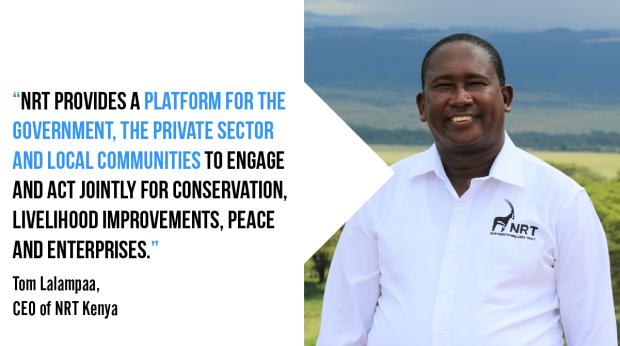
NRT’s Leadership and Management Programme (LAMP) for Indigenous People and Local Communities (IPLCs) aims to equip and empower IPLCs to exercise their rights to manage their land, conserve natural resources and wildlife, and secure their livelihoods for an unpredictable future. It is offered to all NRT member conservancy boards and committee members. 625 people (conservancy managers, board members, community committee members) have taken part in LAMP since 2016, with women representing around a quarter of this number (166).
A governance index is also in place. NRT provides tailored governance support to each conservancy depending on its individual performance index. Two modules make up the governance score for each conservancy:
- A self-reporting management effectiveness score - a survey filled out separately by each conservancy manager, a representative of the conservancy board, and the relevant NRT County Director. It measures aspects of accountability, performance, legitimacy, voice, fairness, rights, and direction to understand trends in operational efficiencies, strategic planning, inclusivity and fairness in decision-making as well as benefit sharing.
- A community voice component - measured through Social CoMMS (NRT’s socio-economic monitoring tool). As NRT develops an efficient way to implement Social CoMMS across conservancies (to capture community perceptions and feedback on their programmes and operations), current governance scores only reflect the management effectiveness component.
3. Bridge the gap between conservation and improved indigenous livelihoods
Historically, local communities have had little say in how conservation areas in Kenya are managed, and have seen little tangible benefit from wildlife protection. As a result, attitudes towards wildlife from the very people that lived alongside it, were apathetic. The community conservation movement is changing this, by bridging the gap between conservation and improved indigenous livelihoods.

NRT member conservancies are protecting wildlife in six main ways: through anti-poaching operations, habitat management and increasing conservation awareness; additionally, via human-wildlife conflict mitigation, wildlife population monitoring and endangered species recovery programmes4.
It is worth mentioning that the EU and Member States have contributed to the improvement of livelihoods and their relationship with conservation in multiple ways including cases where technology was used for purposes such as capacity building and vocational training. For example, Team Europe and, more specifically, the EU, Denmark and Sweden worked with NRT on a Mobile Vocational Training Programme tailored to pastoralists. This programme was aimed primarily at illiterate youth and provided mobile, village-based training to people in community conservancies by partnering with polytechnic institutions.
What’s next for the Team Europe-Kenya Partnership?
The future partnership will further strengthen relations between the EU and Kenya to deliver on the 2030 Agenda for Sustainable Development as well as on areas of key mutual interest, whilst building on achievements and impact in its ongoing areas of cooperation. According to H.E. Simon Mordue, former Ambassador of the EU Delegation to Kenya, “the challenge in the post-COVID-era is not simply to recover to where we were before, but how we can recover better in a way that reconciles human beings and nature”.
2021 is the year when the EU will adopt a new framework for its long-term cooperation with Kenya, the Multiannual Indicative Programme, which will span a period of seven years. The key areas of the future strategy will focus on:
- Green Transition in Kenya: Environmental Sustainability & Resilience;
- Leave no one behind Human Development & Inclusive Growth;
- Governance, Peace & Stability;
- Digitalisation building on Kenya's reputation as Africa's Silicon Savannah.
The Team Europe-Kenya Partnership includes support to Kenya in addressing the needs of the most vulnerable groups of the population particularly at the time of the Covid pandemic, as well as contributing, among others, to the promotion of human rights, democracy, governance and of course wildlife conservation. In that way, it is contributing to addressing the call of Tom Lalampaa, Chief Executive Officer of Northern Rangeland Trust Kenya: “Support local and indigenous communities to conserve the planet for the benefit of people and nature.”
Click on the play button below to watch our video about the NRT model in Kenya.
Have you been involved in relevant interventions for the promotion of wildlife conservation by indigenous people? What was your approach?
Did you meet any challenges, and how did you address them?
Are you aware of other community-led conservancy models?
Leave your comment below!
Read the other episodes of the climate and environment series:
- Episode #1: Larger than Jaguars: Biodiversity protection in the LAC region
- Episode #2:Improving wildlife conservation and food security with local communities
- Episode #3: Local heroes protecting the world's biodiversity hotspots
Credit: Video © Capacity4dev | Photo © Northern Rangelands Trust/Amy Vitale, 2019 - 2021
1 In 2020 Team Europe was launched to support partner countries in the fight against the coronavirus pandemic and its consequences. It brings together the expertise, analysis, networks and resources of the whole EU family – the European Commission, EU Member States, the European Investment Bank, and other European financial institutions. For more information, read here.
2 For more information about the Kenya Vision 2030, read here.
3 Since 2004, the communities of Northern Rangeland Trust have conserved 10,625,531 acres of land for wildlife, supported 100,000+ direct beneficiaries, implemented 135 development projects, permanently employed 1,360 people and empowered 1400 women entrepreneurs.
4 The NRT wildlife team have been collecting data on 11 key wildlife species in 17 conservancies since 2013. These are elephant, eland, oryx, giraffe, gerenuk, lion, cheetah, wild dog, Grevy's zebra, plains zebra and buffalo. The latest data shows that sightings of elephant and Grevy’s zebra significantly increased across the community conservancies in 2019. For a comprehensive report on the impact of NRT member community conservancies on wildlife since NRT was established in 2004, check here.
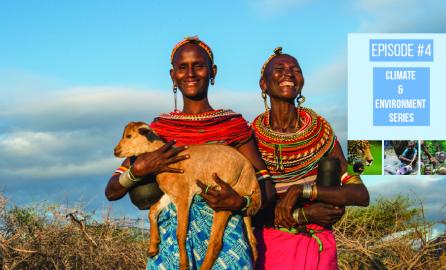


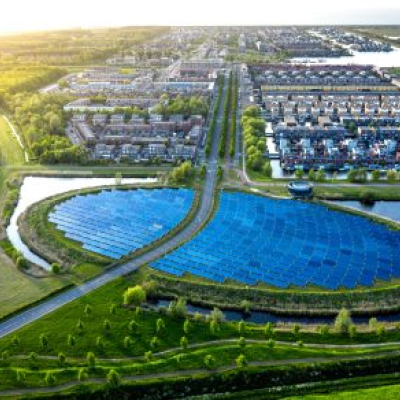

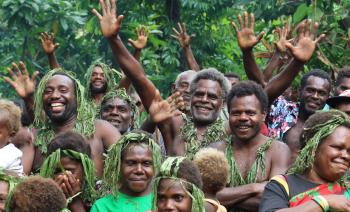

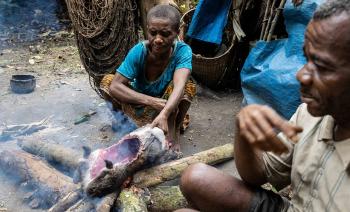


Log in with your EU Login account to post or comment on the platform.